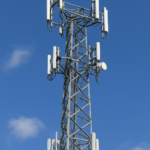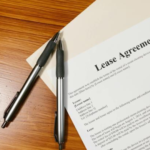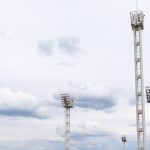In this blog post, I’ll be assessing key ground metrics of the two largest publicly traded tower companies in the United States. Securing control over the land beneath your tower assets is paramount. Extending the lease expiration dates of these sites as much as feasible is the primary goal for the land teams of these companies. While I lack certain data from American Tower, we can make estimates for comparison purposes.
“Owned” ground of Total Portfolio
Crown Castle – 29% or ~11,555 tower assets
American Tower – 37% or ~15,857 tower assets
I need to clarify that American Tower has included the approximately 200 towers they acquired in Canada as part of their overall US tower count from the Insite acquisition in 2020. While this doesn’t significantly impact their total tower count, it’s important to disclose this information in the blog. These numbers encompass sites where the tower companies have either completed a fee simple purchase or secured a long-term easement, typically perpetual.
It’s worth noting that Crown Castle and American Tower have different approaches to site acquisition. Crown Castle relies on site acquisition specialists who handle site securing along with other duties. However, many of these specialists were let go during recent layoffs, suggesting that Crown Castle may now be outsourcing some of these tasks to external vendors. On the other hand, American Tower has a dedicated team called the TAPP Team (Tower Asset Protection Program) whose sole focus is securing sites through lease renewals and buyouts. These internal account managers negotiate deals for sites expiring within the next 10 years, while vendors handle tasks not covered by the internal team, typically later term sites.
While the difference in the number of sites owned may seem minor (approximately 4,300), it’s significant in terms of impact. It would take American Tower 3-4 years of inactivity for Crown Castle to catch up. Assuming an average ground rent of $1,200 per month, this translates to approximately $62 million in annual savings for American Tower. In my view, having an effective land program is crucial for tower companies since rental expenses paid to property owners represent their largest recurring expense. Therefore, it’s essential to optimize efforts to minimize these expenses.
Average remaining term of leased towers
Crown Castle – 35 years
American Tower – 30 years
The comparison indicates that Crown Castle tends to secure longer lease terms compared to American Tower. Obtaining the longest extension possible is advantageous as it eliminates the need for frequent renegotiation. This is why tower companies aim for extensions spanning 40 to 50 years.
Sites < 20 years from Final Lease Expiration
Crown Castle – 11,621 towers
American Tower – Unknown
Unfortunately, American Tower lacks this data, but with 4,300 more owned sites in their portfolio than Crown Castle, I estimate they have between 8,000-10,000 sites within 20 years of lease expiration. While this might suggest that the two major tower companies aren’t effectively securing their sites, they prioritize securing towers that generate the most revenue. It’s likely that 25%-35% of these towers are operating at a loss due to factors like industry consolidation leading to vacant towers, or tenants paying property owners more than they earn from the site.
When American Tower and Crown Castle acquired Verizon and AT&T’s towers, respectively, they included a leaseback agreement, offering favorable financial terms to Verizon and AT&T. These leaseback deals had rates starting at $1,900 per month with a 2% annual escalator. This meant that in high-rent states like California, these towers were immediately financially strained when acquired by the tower companies.
Revenue Secured 20+ Years
Crown Castle – 75%
American Tower – 80%+
This metric is crucial for safeguarding revenue within the tower portfolio. Over the past decade, tower companies have prioritized securing their most profitable sites, learning valuable lessons from TriStar Investors about the importance of multi-tenant sites. While the bulk of their revenue is now secured, as carriers expand their networks, some sites in the portfolio may transition from single carrier to multi-carrier towers. Two years ago, when I left the TAPP Team, American Tower was at approximately 80% in this regard, and I presume they’ve made further progress since then. American Tower has demonstrated strong leadership in their TAPP program for over a decade, consistently completing over 2,000 transactions annually with a focused plan in place. It will be intriguing to observe how Crown Castle addresses the impact of last year’s layoffs on experienced negotiators and how this affects the metric going forward.
Conclusion
The most critical aspect of these tower companies’ portfolios is the land beneath the towers. While strategic tower placement is essential for carrier expansion, securing the ground is paramount due to potentially significant financial implications. Tower companies aim to avoid sites falling within 5 years of expiration to minimize costs, especially for assets with multiple carriers. Regarding Crown Castle’s past performance, I can’t provide a complete assessment. However, the recent layoffs of personnel responsible for negotiating deals to secure assets may impact future reporting. Property owners generally prefer dealing with tower company-employed negotiators, even if third-party vendors are involved. It will be intriguing to observe how the major tower companies enhance these metrics with each passing quarter.












